In 2017, I developed a genetic algorithm for the rapid mass optimization and automatic generation of bridge structures with programmable stiffness properties build from a simple lattice framework (the cuboct truss). I performed this research as an intern for the Coded Structures Lab at NASA Ames Research Center under Dr. Kenny Cheung.

Any structure carried into space must be lightweight due to the high cost of space travel.
Consequently, structures made from lattice framework are actively studied due to their simple modular assembly and high stiffness-to-mass ratio.
These include the cuboct truss, which is a support structure formed from repeating octahedral units.
My research focused on finding a rapid way to produce optimally-performing structures from these easy-to-assemble octahedral building blocks.
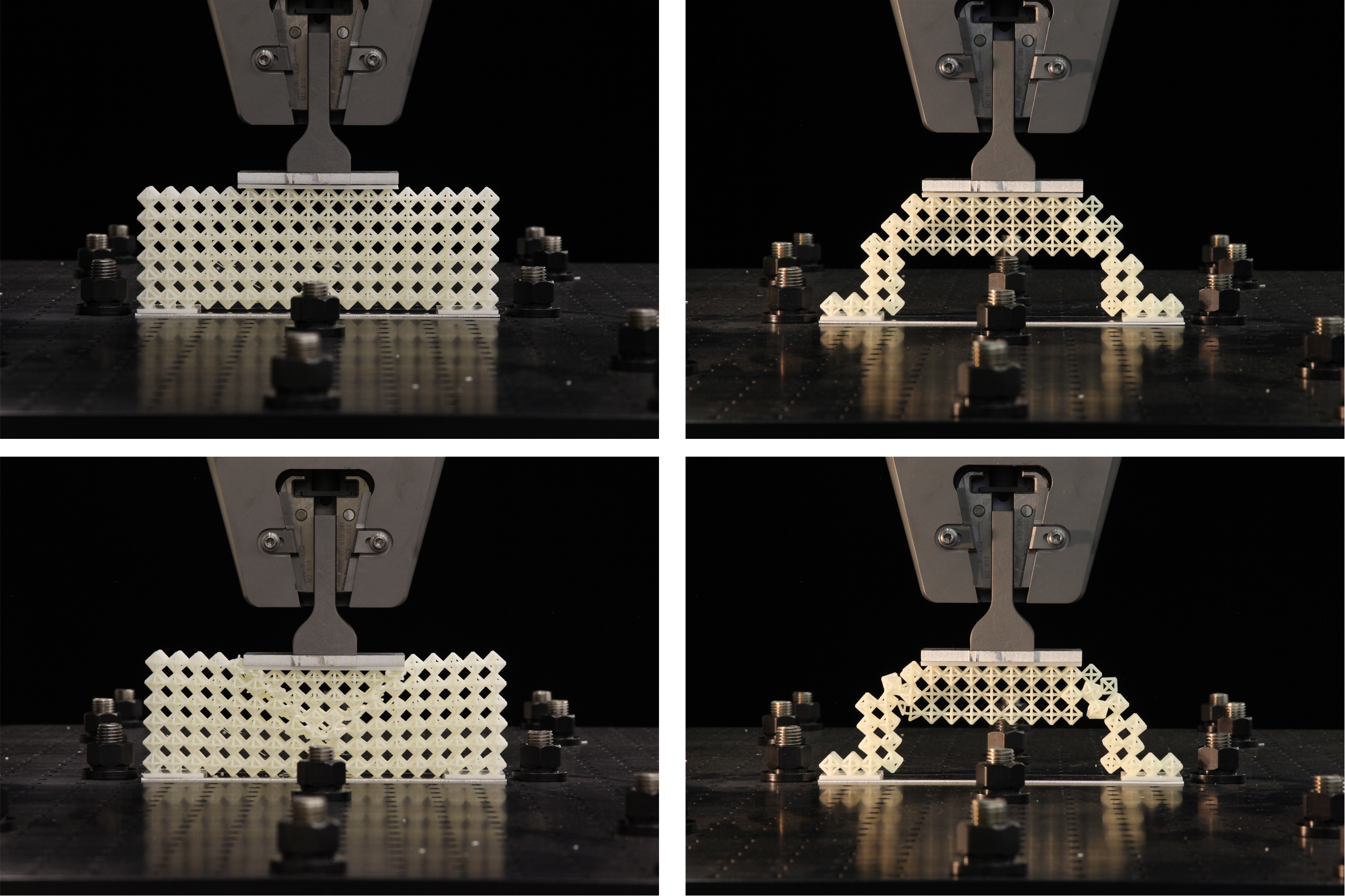 Stress tests of 3D-printed truss beam (left) and high stiffness-to-mass bridge (right) on an Instron 5982 load testing system.
Stress tests of 3D-printed truss beam (left) and high stiffness-to-mass bridge (right) on an Instron 5982 load testing system.
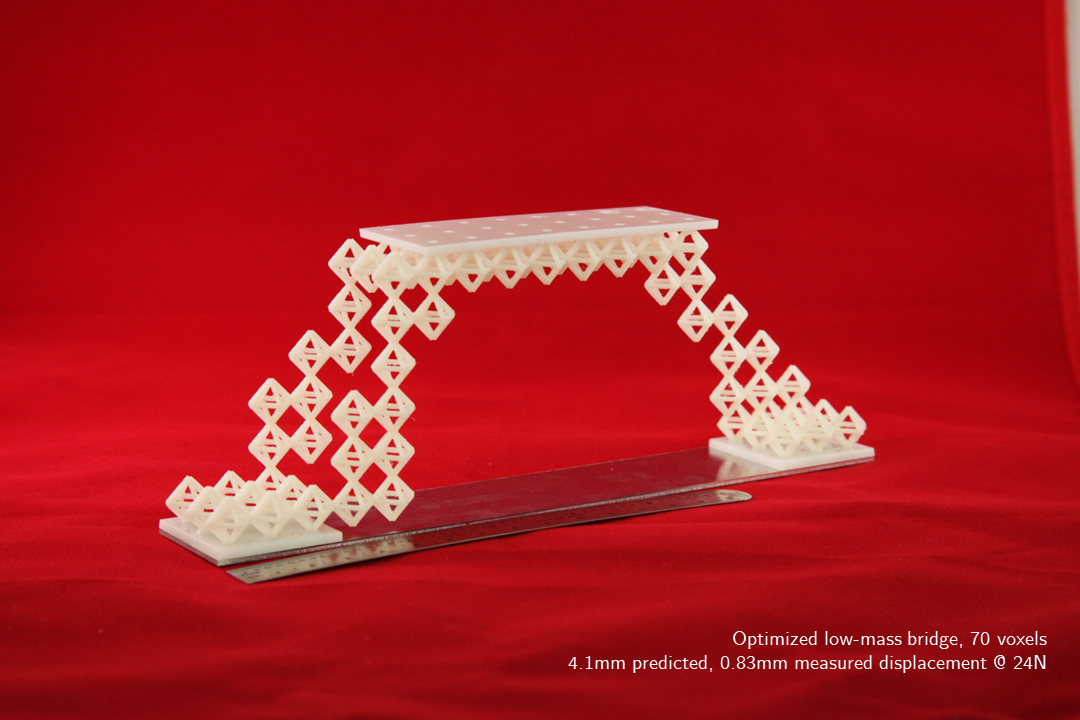
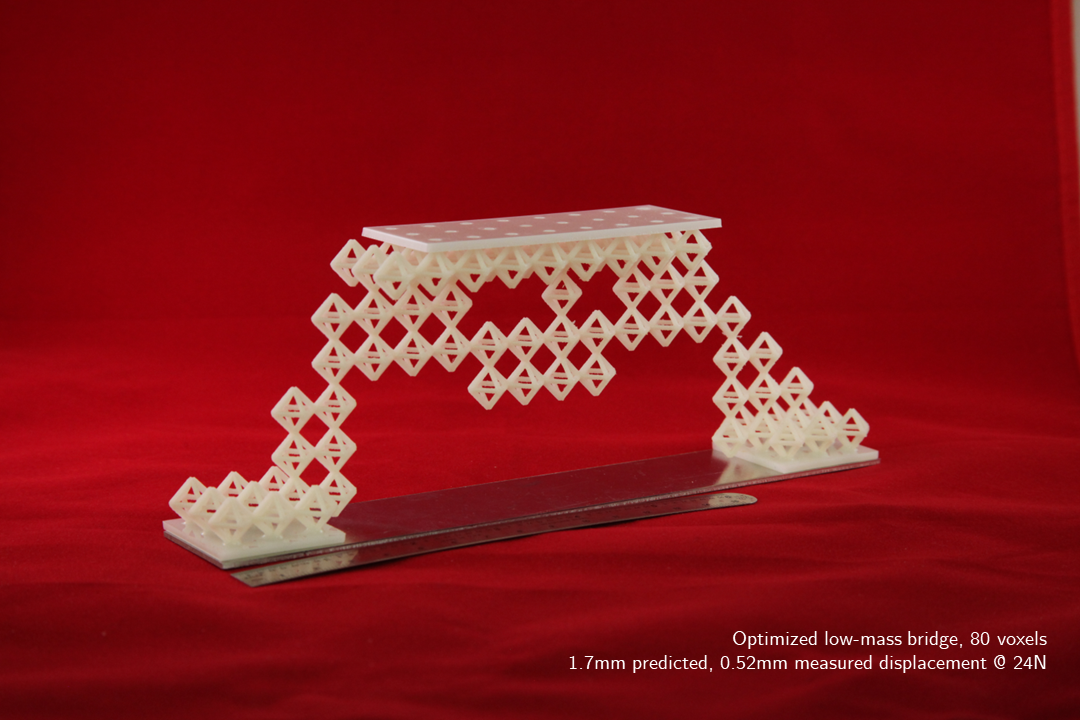
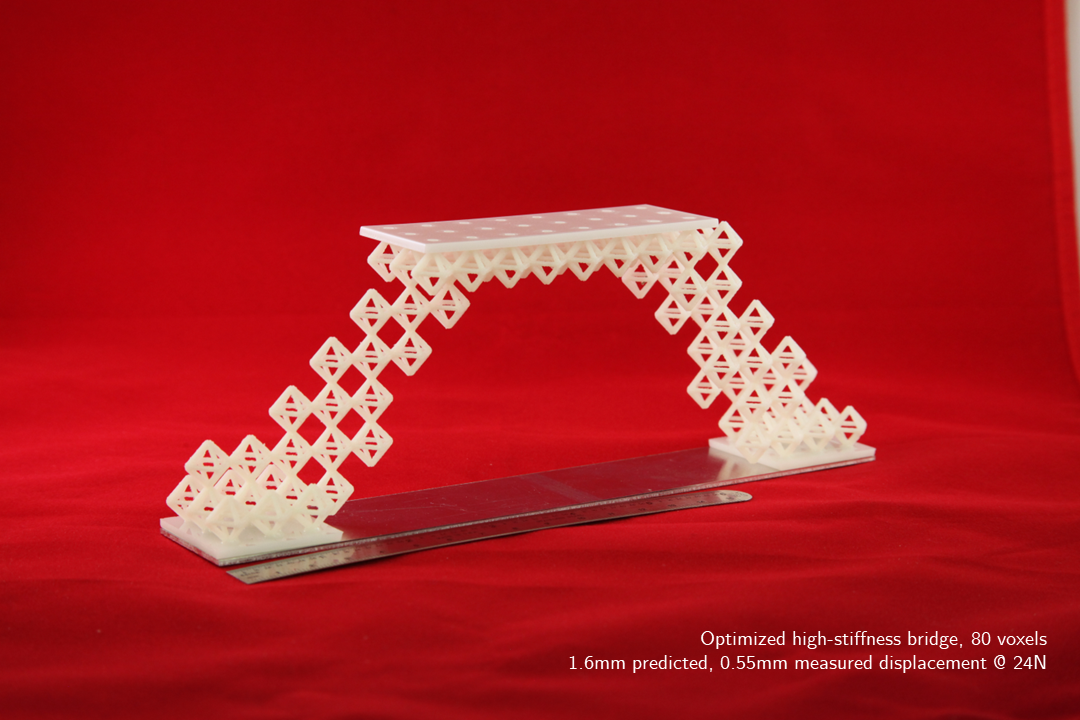
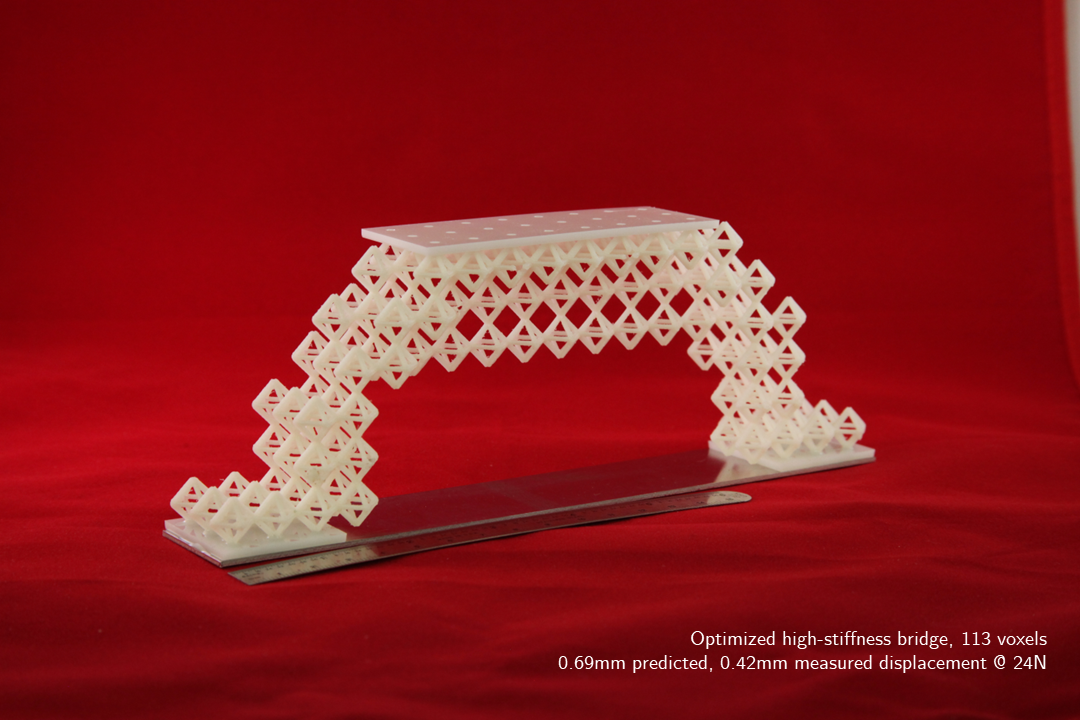
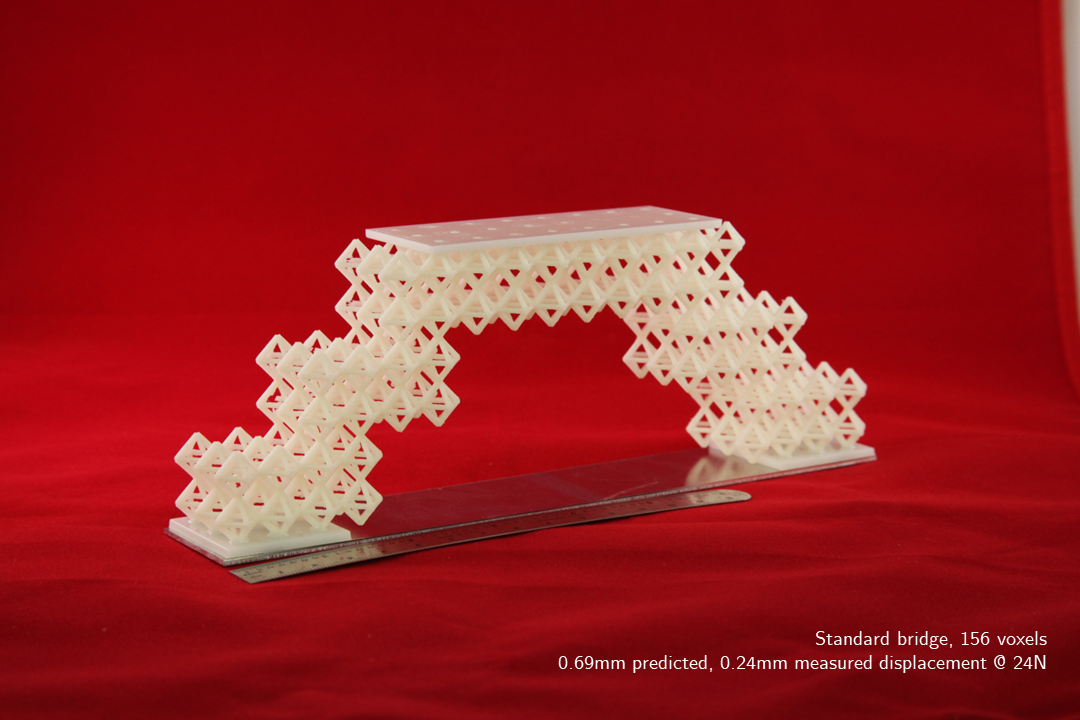
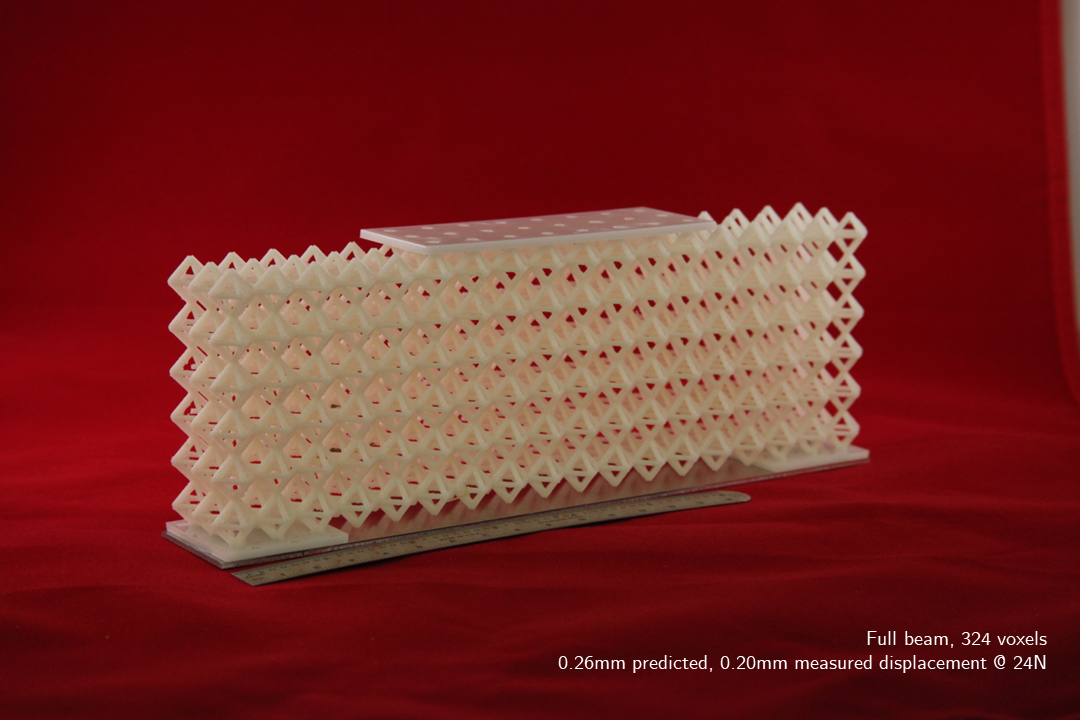
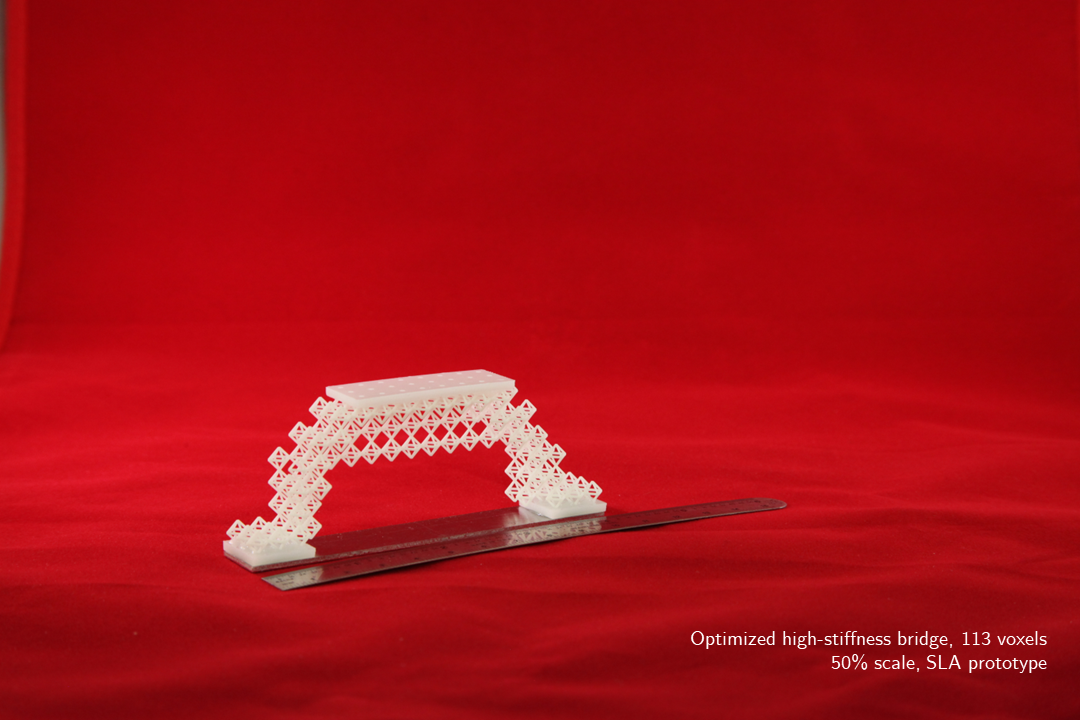
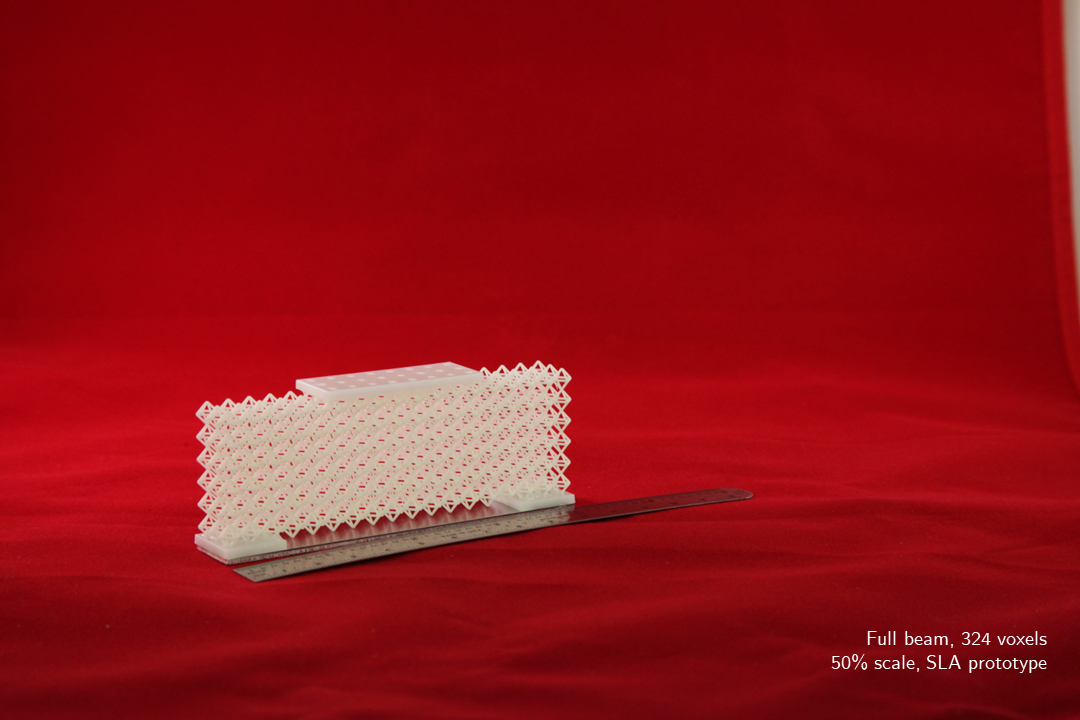

Publication
Topological Optimization of a Cuboct Truss Structure Using a Genetic Algorithm
Holly Jackson
AIAA Scitech Forum, 2017
Paper
NASA TechBytes
IEEE Women in Engineering
Abstract
Transporting structures into space poses countless challenges. Cost, size, and weight often heavily constrain the design of structures for space applications. Algorithmic optimization may be particularly applicable for large-scale, long-duration autonomous systems in remote environments, where the exact conditions may not be precisely known ahead of time and/or the conditions could change rapidly. This paper applies a genetic algorithms for the rapid mass optimization of cuboct truss structures with programmable stiffness properties. These low-mass, high-stiffness structures could significantly reduce the cost required to transport them to space. Four distinct algorithm outputs were 3D printed and verified through stress testing. Performance of the bridge structures was tested by simulation and physical experiment against a conventionally-designed bridge and a full envelope truss beam. Experimental results demonstrate the ability to program mechanical properties and high stiffness-to-mass performance relative to conventional and naive bridges.


